I grew up riding bikes. On weekends, you can find me trashing my mountain bike on the trails of the North Shore. I’ve long felt perfectly comfortable weaving my bike through traffic on a city street.
I’ll be the first to admit that I was initially on the fence about whether a protected bike lane should be built as part of the redesign for Broadway in Vancouver, site of a future subway line and a major thoroughfare connecting the east and west sides of the city. I ride the adjacent bikeways on quieter streets all the time, and I always felt they were adequate for my needs. I figured their presence was enough to not warrant another bike lane along Broadway.
But here’s the crux of the matter. Everyone has different levels of risk tolerance, riding ability and experience. Bikeways that cater only to fit, reckless men are uncomfortable, inaccessible and, as a result, underused by a majority of people. We need to take a hard look at our current cycling infrastructure, and consider the diversity of people it could serve.
But that wasn’t on the agenda when Vancouver’s ABC-majority city council quashed the idea of including a protected bike lane in the Broadway redesign in late March. The vote ensured that drivers could gun it through Vancouver’s “second downtown” for years to come, climate emergency be damned.
On the surface, the decision could make sense. The 10th Avenue bikeway and the off-Broadway bikeway already provide east-west cycling routes throughout the Broadway corridor.
They’re also just a couple of blocks away from Broadway (though at times, they’re separated by a steep hill). And they have clever design strategies that protect cyclists (OK, the road paint is fading but there are street signs with little bikes on them).
Yet, delving a bit deeper reveals a host of safety concerns with the current configuration of the bikeways which pose real threats to anyone travelling outside of a car.
For example, the presence of street parking on both routes forces cyclists to ride dangerously close to parked cars and risk getting doored. It also causes conflicts with oncoming traffic by making the lane too narrow for passing.
But both 10th and off-Broadway are described on TransLink’s cycling network map as “comfortable for most.” Which has to mean something, right?
ABC Coun. Brian Montague expressed confidence that the bikeways were good enough for cyclists. But he is an able-bodied man and a former police officer. I would argue that his level of comfort riding with traffic would be vastly different than many others who also use the bikeways, including children, seniors, those with mobility concerns or people who just aren’t as comfortable on a bike as those who describe themselves as “avid cyclists.”
Biking off-Broadway is a public safety concern
Based on data collected by ICBC, 46 people riding bikes were struck by drivers on the 10th and off-Broadway bikeways in 2019. That’s almost one person a week injured or killed on what the City of Vancouver describes as one of the busiest east-west cycling corridors in the city.
I’ve been deliberately avoiding using the term “accident” to describe collisions between drivers and vulnerable road users, as it implies a lack of intent between the two parties involved. This framing leaves out a third, arguably most important party, whose decisions likely played a major role in the crash. The people who designed the street.
We need to hold those who design our public streets accountable when their decisions create a hazard to public safety.
10th and off-Broadway can be safer for cyclists and, with some key design changes, have real potential to be a safe and enjoyable route for people getting around outside of a car.
With the help of people who regularly cycle on the bikeways, I’ve compiled a list of four fixes that the city could make right now to drastically improve their safety and accessibility.
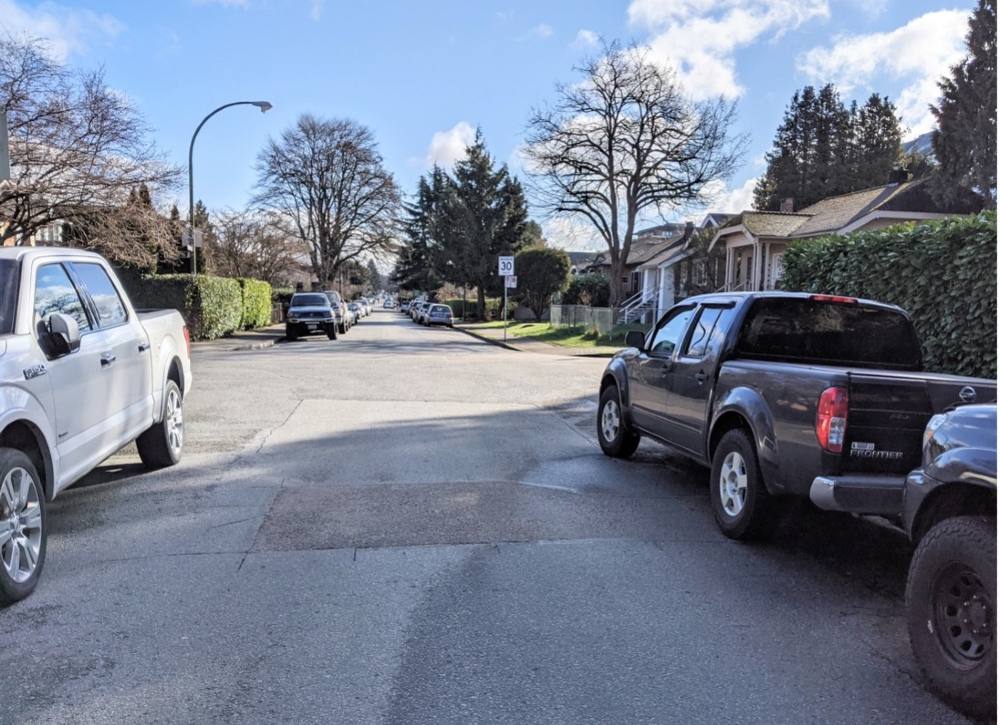
Action 1: Remove parking spaces close to intersections
When cars are allowed to park right up to intersections, they block the lines of sight for everyone approaching the intersection. Many cyclists I spoke with brought up past experiences with near-misses or collisions due to this issue.
The solution here is to restrict parking near an intersection, using signs in the interim until physical barriers, such as curb extensions or “curb bulges,” can be installed.
These barriers can take the shape of rain gardens, parkettes, bikeshare stations or even the infamous “banana barrier,” all tools that are currently in place throughout the city. Making these standard throughout 10th and off-Broadway would be a good first step.
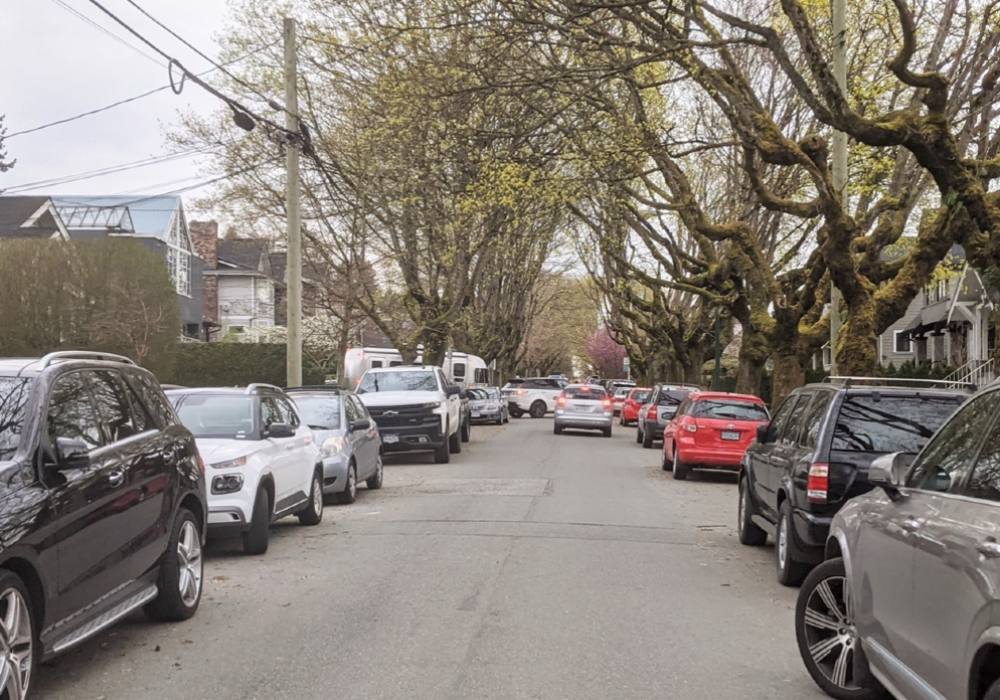
Action 2: Address the problem of ‘car canyons’
A driver might not see anything wrong with the image above, but it’s a stressful sight for a cyclist. Will someone open their car door into you? Is a driver exiting their driveway? Is there enough room for an oncoming driver to go past you? Is an impatient driver behind you trying to pass?
These are the questions someone on a bike must ask themselves when they’re travelling down “car canyons” — narrow streets that are clogged by parked cars on either side.
This is public space that’s being occupied by private vehicles. Removing them would transform the bikeways into a route that’s safe and actually pleasant to be on.
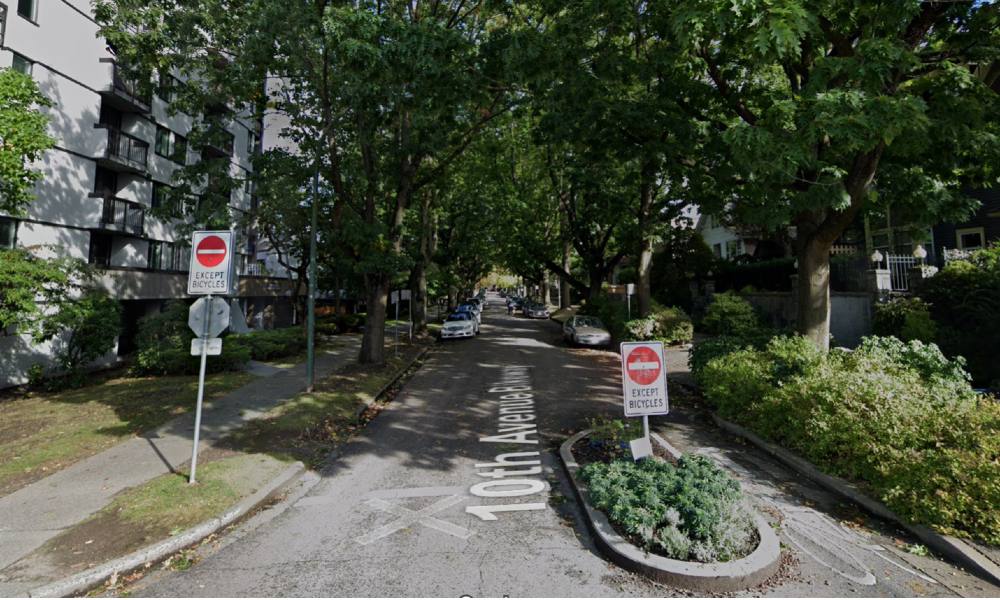
Action 3: Increase modal filtering
Modal filters are tools that prevent street access to cars while allowing other modes of transportation free passage.
This stops drivers from using the bikeway to take shortcuts from the vehicular traffic along Broadway.
City council’s decision to maintain an extra lane of car traffic on Broadway means that 10th and off-Broadway should, in theory, be inaccessible to all but local traffic. On the ground, this would result in fewer cars using the bikeway as an east-west throughfare.
Reducing interactions between cars and vulnerable road users would be another step towards a comfortable and safe experience.
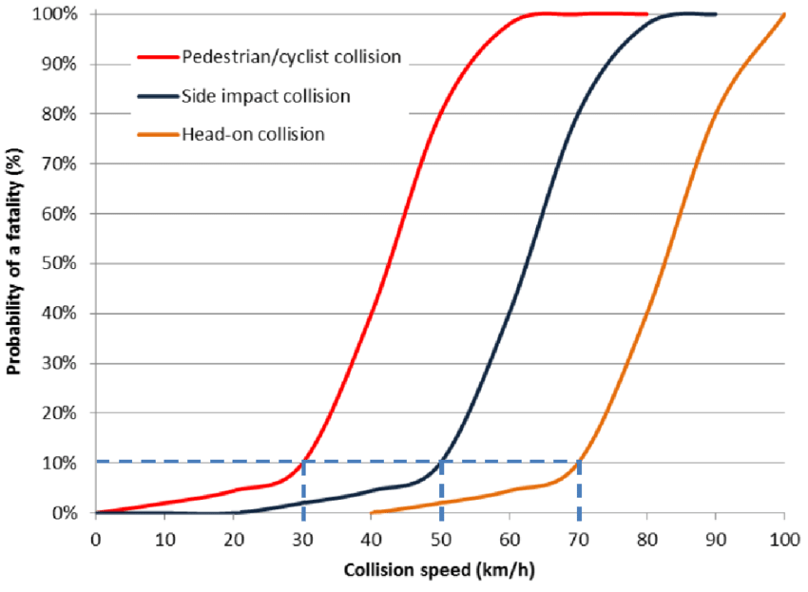
Action 4: Slow drivers down
When a person is hit by a driver at 50 kilometres per hour, they have an 80 per cent chance of dying as a result. When the speed is reduced to 30 kilometres per hour, the likelihood of a fatal collision drops to 10 per cent.
Slowing drivers down means more than just signage. It means redesigning the street to compel them to slow down.
Speed bumps, raised crosswalks and roundabouts used in tandem with enforcement measures like speed cameras will reduce how deadly collisions are. Measures like these should take higher priority than ensuring drivers reach their destination a few seconds earlier.
There is real potential in these changes. The city already uses design guidelines known as “All Ages and Abilities,” design strategies that have produced equitable, accessible and popular bike lanes along Beach Avenue, Richards Street, Dunsmuir Street and the Arbutus Greenway.
These AAA lanes fully separate cars from vulnerable road users using physical barriers, creating a cycling (and skateboarding, roller-skating, wheelchair-ing) experience that is not only physically safer, but feels safer too.
Research completed by the National Association of City Transportation Officials found that AAA lanes dramatically reduce crashes that result in injury, while at the same time boosting bike lane use to new highs.
This makes sense when you take into account that fewer than 10 per cent of adults in the U.S. feel comfortable riding with traffic or on a painted bike lane, while 81 per cent would ride in one that was protected from traffic.
And that’s a key takeaway here. Feeling safe is personal. A bike lane that feels comfortable and pleasant to be on is one that is used by more people, especially those who wouldn’t consider cycling in the past.
These results point to the potential of 10th and off-Broadway as integral pieces of safe, accessible cycling infrastructure in Vancouver, provided that our municipal leaders have the willpower and courage to make the changes needed to do so. ![]()
Read more: Transportation, Municipal Politics, Urban Planning



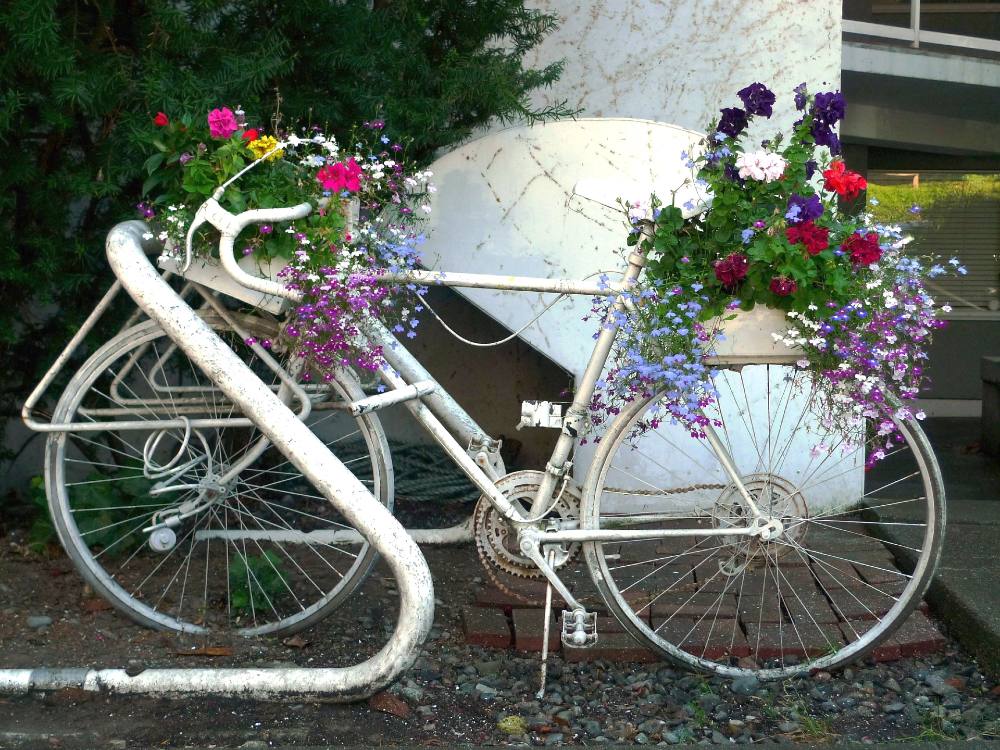












Tyee Commenting Guidelines
Comments that violate guidelines risk being deleted, and violations may result in a temporary or permanent user ban. Maintain the spirit of good conversation to stay in the discussion and be patient with moderators. Comments are reviewed regularly but not in real time.
Do:
Do not: